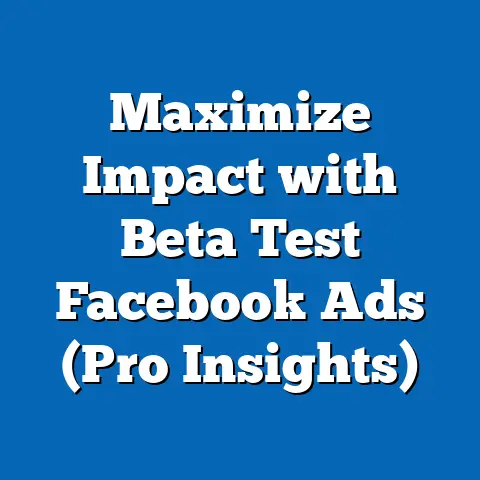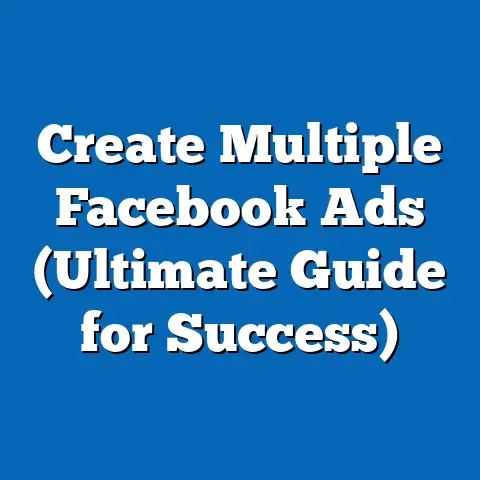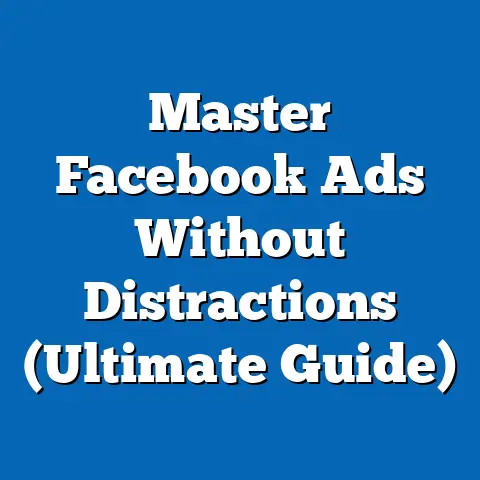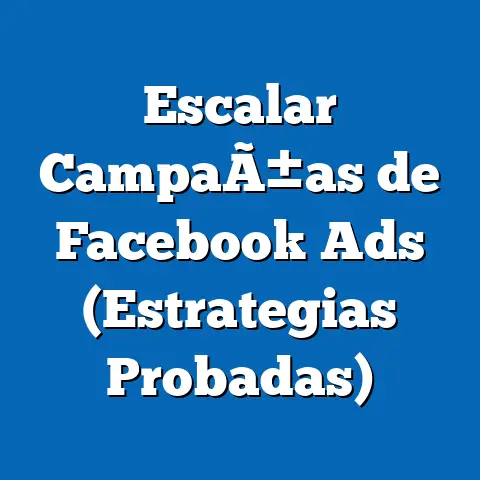Best Facebook Video Ads Strategies (Pro Techniques for 2025)
Video is no longer a “nice-to-have” in the marketing world; it’s the engine driving engagement and conversions, especially on platforms like Facebook. As we hurtle towards 2025, the importance of video content on social media is only set to amplify. But here’s the kicker: a one-size-fits-all approach simply won’t cut it. You need to understand that regional needs are the secret ingredient to unlocking the full potential of your video ad strategies.
Think about it. What resonates with an audience in North America might completely miss the mark in Asia. Different regions have distinct cultural preferences, varying levels of internet access, and unique consumer behaviors. Ignoring these regional nuances is like trying to navigate with a faulty GPS – you’ll likely end up lost and wasting valuable resources.
In this guide, I’ll walk you through the pro techniques for crafting Facebook video ads that not only grab attention but also drive meaningful results by aligning with specific regional needs in 2025. I’ve spent years experimenting with different video ad strategies on Facebook, and I’ve learned firsthand how critical it is to tailor your approach to the audience you’re trying to reach. So, buckle up, and let’s dive in!
Section 1: Understanding Regional Needs
Before you even think about shooting a frame of video, you need to become a student of your target regions. This means digging deep into the demographics, cultural nuances, and economic factors that shape how people perceive and interact with video content.
Demographics of Facebook Users
Facebook boasts a massive global user base, but the demographics vary significantly from region to region. For example:
- North America: Users are generally older and have higher disposable incomes. They are often receptive to ads that offer convenience, luxury, or innovative solutions.
- Europe: There’s a strong emphasis on privacy and data protection. Ads need to be transparent and respect local regulations like GDPR.
- Asia: This region is incredibly diverse, with a mix of developed and developing countries. Mobile-first is the name of the game, and short, engaging videos tend to perform well.
- Africa: Mobile internet penetration is rapidly increasing. Video ads that are data-light and offer value (e.g., educational content or practical solutions) are likely to resonate.
- Latin America: Social media usage is high, and users are generally receptive to ads that are entertaining and culturally relevant.
I remember a campaign I ran targeting both the US and Brazil. The ad was essentially the same, showcasing a new line of eco-friendly products. In the US, it performed reasonably well, but in Brazil, it absolutely exploded. Why? Because Brazilians are generally more environmentally conscious and more attuned to brands that align with their values. This taught me a valuable lesson about the power of understanding regional priorities.
Cultural Nuances
Culture is the invisible force that shapes our perceptions and behaviors. What’s considered humorous in one culture might be offensive in another. Language, storytelling styles, and even visual cues can have a profound impact on how your video ad is received.
For instance, a car commercial featuring a family road trip might resonate in North America, where road trips are a common pastime. However, in parts of Asia, where public transportation is more prevalent, this concept might not be as relatable.
I once worked on a campaign for a global food brand. We created a video ad that featured a family enjoying a meal together. In Western markets, it was well-received, but in some Asian countries, it fell flat. We later realized that the concept of family meals is often different in these cultures, with more emphasis on respect for elders and different dining etiquette. We had to re-shoot the ad, incorporating more culturally appropriate visuals and messaging, to make it resonate with the target audience.
Economic Factors
Economic factors, such as purchasing power and mobile internet penetration, also play a crucial role in shaping how video ads are received. In regions with lower purchasing power, ads that emphasize affordability and value are likely to be more effective. In areas with limited mobile internet access, it’s essential to optimize your videos for low bandwidth to ensure they load quickly and don’t consume excessive data.
I’ve seen campaigns fail miserably simply because the target audience couldn’t afford the product being advertised. It’s crucial to do your research and understand the economic realities of the regions you’re targeting.
Key Takeaway: Deeply understanding the demographics, cultural nuances, and economic factors of your target regions is the foundation for creating effective Facebook video ads.
Section 2: The Evolution of Video Ads on Facebook
Facebook video ads have undergone a remarkable transformation over the years. From humble beginnings as simple slideshows to the immersive, interactive experiences we see today, the evolution has been driven by technological advancements and changing user behaviors.
The Shift to Dynamic Video Content
Remember when Facebook was dominated by static images and text-based updates? Those days are long gone. The platform has embraced video content with open arms, and users are responding in kind.
Statistics consistently show that video content outperforms other formats in terms of engagement. Videos are more likely to grab attention, hold it for longer, and drive higher click-through rates. This trend is projected to continue into 2025, with video expected to account for an even larger share of online content consumption.
I’ve personally witnessed this shift firsthand. Years ago, I could get decent results with well-crafted image ads. But now, video is almost always the winner when I run A/B tests. It’s simply more effective at capturing attention and conveying a message in a memorable way.
The Rise of Short-Form Videos
While longer-form videos still have their place, the trend is undeniably towards shorter, more concise content. Platforms like TikTok and Instagram Reels have popularized the concept of bite-sized videos that pack a punch in just a few seconds.
Facebook has adapted to this trend by emphasizing short-form video formats like Stories and Reels. These formats are perfect for capturing attention quickly and delivering a concise message.
I’ve found that short-form videos are particularly effective for mobile advertising. People are often scrolling through their feeds on the go, so you need to grab their attention within the first few seconds. If you can’t do that, they’ll simply scroll on by.
Key Takeaway: The evolution of Facebook video ads is characterized by a shift towards dynamic, engaging content, with a growing emphasis on short-form formats optimized for mobile viewing.
Section 3: Key Strategies for Effective Video Ads in 2025
Now that we’ve laid the groundwork, let’s dive into the specific strategies you can use to create Facebook video ads that resonate with your target audience in 2025.
1. Focus on Authentic Storytelling
In a world saturated with advertising, authenticity is a breath of fresh air. People are tired of being bombarded with generic marketing messages. They want to connect with brands that are genuine, transparent, and relatable.
Storytelling is a powerful way to build this connection. By sharing stories that resonate with your target audience, you can create an emotional bond that transcends the transactional nature of advertising.
Think about Patagonia, for example. Their video ads often feature stories of environmental conservation and outdoor adventure. They don’t just sell clothing; they sell a lifestyle and a set of values.
I’ve found that the most effective storytelling videos are those that are personal and vulnerable. Don’t be afraid to share your brand’s struggles and triumphs. People connect with authenticity, even if it’s imperfect.
2. Leverage Advanced Targeting Options
Facebook’s targeting capabilities are constantly evolving, and in 2025, they will be more sophisticated than ever. You can target users based on a wide range of factors, including demographics, interests, behaviors, and even their offline activities.
The key is to use this data to create highly targeted video ads that resonate with specific segments of your audience. For example, if you’re selling a product that’s popular with millennials, you can target users in that age group who have expressed an interest in related topics.
I’ve seen campaigns achieve incredible results simply by leveraging Facebook’s advanced targeting options. It’s like having a laser beam that allows you to reach exactly the people you want to reach.
I remember a campaign I ran for a local bakery. We targeted users within a 5-mile radius of the bakery who had expressed an interest in baking, desserts, or local businesses. The results were phenomenal. We saw a significant increase in foot traffic and sales.
3. Utilizing Interactive Elements
Interactive video ads are a game-changer. They allow you to engage with viewers in a more meaningful way, turning them from passive observers into active participants.
Facebook offers a range of interactive elements, including polls, quizzes, and shoppable features. These elements can be used to enhance viewer engagement, gather valuable feedback, and drive conversions.
For example, you could create a video ad that asks viewers to vote on their favorite product. Or you could create a quiz that helps viewers determine which product is right for them.
I’ve found that interactive video ads are particularly effective for generating leads. By asking viewers to provide their contact information in exchange for a reward (e.g., a discount code or a free e-book), you can build your email list and nurture potential customers.
4. Optimize for Mobile Viewing
With the vast majority of Facebook users accessing the platform on their smartphones, mobile optimization is no longer optional; it’s essential.
This means creating video ads that are specifically designed for mobile viewing. Consider the following:
- Aspect Ratio: Use a vertical or square aspect ratio to fill the screen on mobile devices.
- Length: Keep your videos short and concise to capture attention quickly.
- Loading Time: Optimize your videos for low bandwidth to ensure they load quickly and don’t consume excessive data.
- Text Overlays: Use clear and concise text overlays to convey your message, even when the sound is off.
I always test my video ads on a variety of mobile devices to ensure they look and perform well. It’s amazing how much difference a few tweaks can make.
5. Incorporating User-Generated Content (UGC)
User-generated content (UGC) is a goldmine of authenticity. It’s content created by your customers, not by your marketing team.
UGC can be incredibly powerful in building trust and community around your brand. When people see other customers raving about your products or services, they’re more likely to trust your brand and make a purchase.
You can encourage UGC by running contests, asking customers to share their experiences on social media, or simply reaching out to happy customers and asking if they’d be willing to create a video testimonial.
I once ran a campaign for a travel company that featured UGC videos from customers who had visited various destinations. The results were incredible. People were much more likely to book a trip after seeing real-life experiences from other travelers.
Key Takeaway: Effective Facebook video ads in 2025 will be authentic, targeted, interactive, mobile-optimized, and will leverage the power of user-generated content.
Section 4: Measuring Success and Adapting Strategies
Creating great video ads is only half the battle. You also need to measure their performance and adapt your strategies based on the data.
Key Performance Indicators (KPIs)
The KPIs you track will depend on your specific goals, but some common metrics include:
- Reach: The number of unique users who saw your video ad.
- Impressions: The number of times your video ad was displayed.
- Views: The number of times your video ad was viewed for at least a certain duration (e.g., 3 seconds or 15 seconds).
- Engagement: The number of likes, comments, and shares your video ad received.
- Click-Through Rate (CTR): The percentage of users who clicked on your video ad.
- Conversion Rate: The percentage of users who took a desired action after viewing your video ad (e.g., making a purchase or filling out a form).
It’s important to note that KPIs can vary by region. For example, in some regions, engagement might be a more important metric than CTR.
A/B Testing
A/B testing is a powerful way to optimize your video ads. By testing different versions of your ads, you can identify what works best and make data-driven decisions.
You can A/B test a wide range of elements, including:
- Headlines: Test different headlines to see which ones are most likely to grab attention.
- Visuals: Test different visuals to see which ones are most appealing to your target audience.
- Call to Action: Test different calls to action to see which ones are most likely to drive conversions.
- Targeting: Test different targeting options to see which ones are most effective at reaching your target audience.
I’m a huge advocate of A/B testing. It’s the only way to know for sure what works and what doesn’t.
Adapting Based on Data
The data you collect should inform your future strategies. If you see that a particular video ad is performing well in one region but not in another, you can adjust your targeting or create a new version of the ad that’s more relevant to the underperforming region.
I’ve seen brands completely turn around their video ad performance by simply paying attention to the data and making adjustments accordingly.
Key Takeaway: Measuring your video ad performance, A/B testing different elements, and adapting your strategies based on the data are essential for maximizing your ROI.
Conclusion
In the ever-evolving landscape of social media advertising, aligning your Facebook video ad strategies with regional needs is paramount. By understanding the demographics, cultural nuances, and economic factors of your target regions, you can create video ads that resonate with your audience, build trust, and drive meaningful results.
As we look ahead to 2025, it’s crucial to stay updated with the latest trends and techniques. The world of video advertising is constantly changing, and those who adapt quickly will be the ones who succeed.
So, go forth and experiment with these strategies in your future campaigns. Embrace the power of video, and watch your Facebook advertising results soar!






